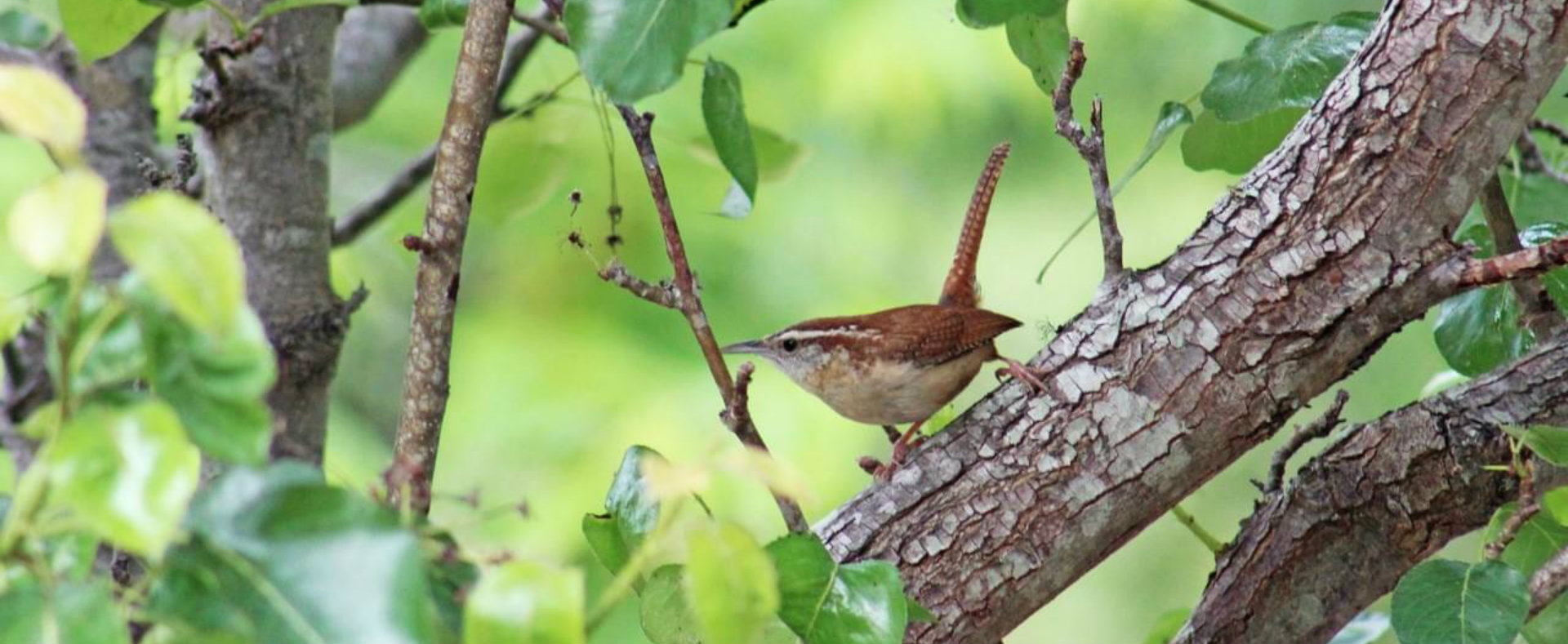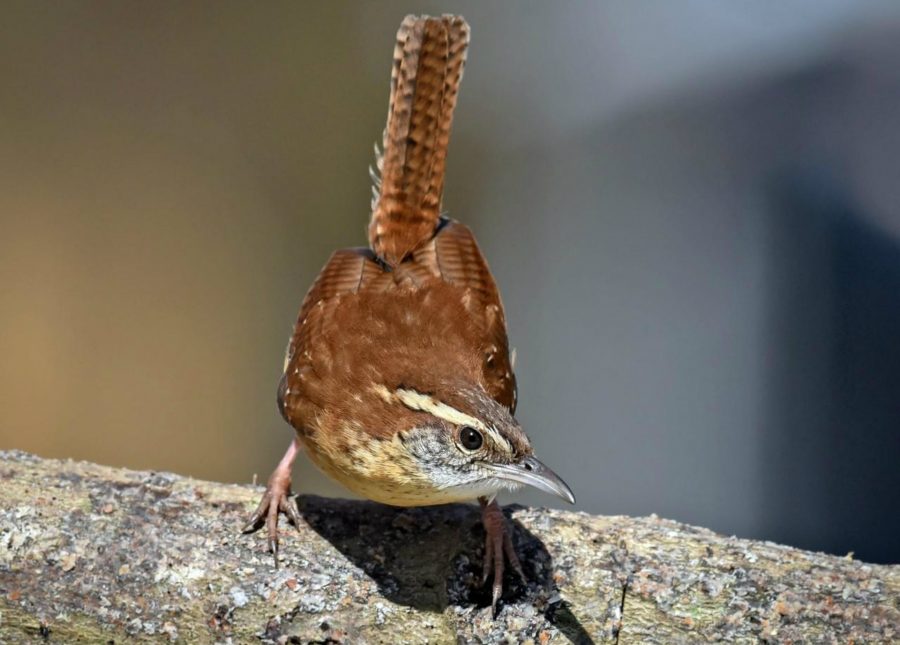
CAROLINA WREN
This species is a year-round resident in Essex County and sometimes the “tea kettle, tea kettle” song is heard on the coldest days in the winter.
In summer it can seem that every patch of woods in the eastern United States rings with the rolling song of the Carolina Wren. This shy bird can be hard to see, but it delivers an amazing number of decibels for its size. Follow its teakettle-teakettle! and other piercing exclamations through backyard or forest, and you may be rewarded with glimpses of this bird’s rich cinnamon plumage, white eyebrow stripe, and long, upward-cocked tail. This hardy bird has been wintering farther and farther north in recent decades.
Size & Shape
The Carolina Wren is a small but chunky bird with a round body and a long tail that it often cocks upward. The head is large with very little neck, and the distinctive bill marks it as a wren: long, slender, and down curved.
Color Pattern
Both males and females are a bright, unpatterned reddish-brown above and warm buffy-orange below, with a long white eyebrow stripe, dark bill, and white chin and throat.
Behaviour
The Carolina Wren creeps around vegetated areas and scoots up and down tree trunks in search of insects and fruit. It explores yards, garages, and woodpiles, sometimes nesting there. This wren often cocks its tail upward while foraging and holds it down when singing. Carolina Wrens defend their territories with constant singing; they aggressively scold and chase off intruders.
Habitat
Look—or listen—for Carolina Wrens singing or calling from dense vegetation in wooded areas, especially in forest ravines and neighbourhoods. These birds love to move low through tangled understory; they frequent backyard brush piles and areas choked with vines and bushes.
*Image and description were sourced from: allaboutbirds.org

